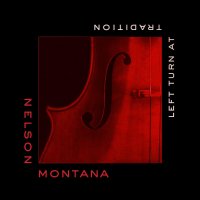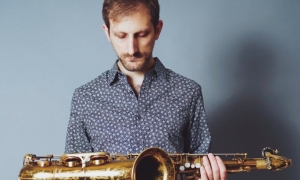Home » Jazz Articles » Interview » Jakob Sørensen: A New Path for the Nordic Sound
Jakob Sørensen: A New Path for the Nordic Sound

Courtesy Frank Nielsen
With this release, I feel we are expanding the understanding of Nordic jazz, which all the time hovers between the abstract and tangible.
—Jakob Sørensen
Quite often, musicians are not fond of being labelled or associated with a particular aesthetic, but Sørensen himself has actively used the word Nordic to describe the music of the group. But while he is carrying the torch of a tradition associated with Norwegian saxophonist Jan Garbarek, Sørensen is also adding his own local touch to the music, and he is part of a generation for whom playing with electronics is just as natural as playing an acoustic instrument. However, it's still the trumpet that is at the center of everything Sørensen does with his own music, although it was a pianist that made him fall in love with music.
All About Jazz: What are your first memories of hearing music and what do you remember about the way you responded to it?
Jakob Sørensen: I first remember falling in love with the music of the pianist Dollar Brand (Abdullah Ibrahim) and especially the album African Marketplace (Elektra, 1979). I must have been 13 years old. For a long time, I remember coming home from school and putting the record on my parent's stereo. The honesty and immediacy that the music contains still gets to me.
AAJ: As I understand it, you come from a musical home?
JS: Music has always been important in my family. My mother is a hobby musician, and my father teaches piano and brass at the local music school and he also directs the local big band and harmony orchestra. Music has always been something that has connected us and something that has enhanced our social circle. I still see friends whom I started playing with 25 years ago and that's part of the reason I'm still playing today.
AAJ: You play the trumpet. Could you say something about your process of choosing this instrument?
JS: It began when I found my mother's old trumpet in the closet and played a bit just for fun—it must have been before I started taking lessons. Since then, the instrument has been an irreplaceable part of my life. I look forward to playing the trumpet each day, whether it's a big festival or a private arrangement. To me, the trumpet is an instrument that requires that you touch it every day, otherwise I lose the feeling for the instrument, and I can immediately sense it in my sound. It has become an enhancement of my personality and if I don't practice for a couple of days, it also affects my mood.
AAJ: Speaking of mood, your music has a particular feeling that can be connected to the so-called Nordic sound. How did you arrive at that?
JS: I've always loved a good melody and a personal expression in the music and at the same time I feel the influence of the Nordic landscape—the elongated coasts, the windswept moors, and the deep-green forests. This is where I get a lot of my inspiration.
AAJ: So how would define this elusive term, the Nordic sound? What does it mean to you, and what kind of musical lineage do you feel represents it?
JS: To me, the Nordic sound is a metaphor for lyrical melodies played over a pattern of tranquil chords. The melodies often have their roots in folk music and psalms. Musically I hear the Nordic sound as a signature in Jan Johannson's Jazz på Svenska (Megafon, 1964) or Keith Jarrett's My Song (ECM, 1978).
AAJ: You have recorded under your own name with the group Bagland. Could you tell about the formation of the group and the process of recording your debut?
JS: I wanted to form a band that wanted the same things aesthetically as me. At the same time, the relation between us had to be good and they had to be able to go into the music with me and provide feedback. It has always been important to me that the musicians can relate to the music. That's the reason I try to give as few directions as possible. I think the track "Vindeltrappen" (The Staircase) from our debut is a track that shows that approach.
AAJ: Perhaps you could also explain the name of the group to readers who don't understand Danish. What does the name Bagland actually mean?
JS: Bagland is the Danish expression for constituency. I try to make music where no one takes the spotlight at the expense of the others. I think that's an approach where we can make each other stronger. In the Danish word there is also the connection to the word "land," and I think it adds a sense of tranquility that I associate with images of the Scandinavian landscape.
AAJ: The album and many of your other albums have been released on Jaeger Community Music. Could you talk about the label, the Aarhus scene of music and your relation to it?
JS: The label is run by Mathias Jaeger who also plays keyboard in Bagland. It's a label that releases music with a connection to Aarhus. I think the jazz scene in Aarhus is something special. The sound is experimental, and the musicians collaborate across each other's releases. Check out Abekejser, I Think You're Awesome, Fauna 5, I Just Came From The Moon or Røgsignal.
AAJ: The Bagland album was graced by the photography of famous Danish photographer, Kirsten Klein, and she also provides the cover photo for your latest album with Bagland, States of Being. How do you see the connection between her photography and the music?
JS: It has always been important to me that the look of the physical product makes associations with the music. When I stand with the album in my hands and look at a beautiful photo by Kirsten Klein, I feel that the music lives on after the record has ended. On States of Being there's an image of a goose feather where you can see that the rays of each form a mutual direction, just like we create a mutual sound in the band.
AAJ: I would also like to ask you about the influence of other art forms on the music. Your album with the group Fabel included a visual component and the album Cirkel with Bagland is inspired by the different stories of the northern Danish city of Skagen in the 19th century. How do different sources of inspiration find their way into your music and is it important to you that the music tells a story? If so, what does the concept of a musical story mean to you?
JS: I try to create different obstacles to challenge myself and see what it brings to the music. On the album Cirkel, I was inspired by artists from Skagen and their environment. At the time, the artists were also very fascinated by nature and the special light of this region—and I feel the same way. On the album with the group Fabel, I worked with photo artist André Hansen. We juxtaposed images for a full album where they didn't show the same thing as the music, but rather the opposite.
AAJ: States of Being is your latest album with Bagland. Compared to Cirkel, this album has a very different mood and one of the changes is Mathias Jaeger's shift to solely playing synthesizer and the poignant use of cello on tracks like "Amber Blush," "Cryo" and especially "Interbeing," which seems to open a gap that is equally beautiful and dangerous. Could you talk about the sound of the album?
JS: Since 2019, Bagland has tried to integrate electronic sound sources and explore the limits of the genre with synthesizer, pedals and electric bass. We tap into a playful electronic universe, which I still believe is connected to the Nordic sound of the band. We invited Josefine Opsahl (cello) and Anna Jalving (violin) on a couple of tracks, and in that way we forced ourselves to rethink our own place in the music.
AAJ: While the music on States of Being is still melodic, it seems more focused on the pure quality of sound compared to the other albums. Do you see your take on the Nordic sound as moving in a more abstract direction?
JS: We work a lot with textures in Bagland and the opportunities are many when you record in a studio with the possibility of doubling instruments. We have added the sound of pedal steel on this release, which gives a dreamy aspect to the universe. It makes it easy to add another layer with the melody/solo hovering above. With this release, I feel we are expanding the understanding of Nordic jazz, which all the time hovers between the abstract and tangible.
AAJ: Besides playing with Bagland, what are some of your other projects?
JS: I'm involved in the project Kobter with trumpeter Peter Marott. Our lyrical interplay mixes with electronic sounds and together we explore the many colors of the trumpet, from the fragile to the untameable. I also play as guest soloist in different projects, including the duo Svaneborg/Kardyb, which plays minimalistic, spherical music in a dreamy and groovy universe.
AAJ: Finally, do you plan to tour with the new album, and do you have any other projects lined up?
JS: We have just finished a small tour around Denmark where we presented the new music to the audience, and thankfully, it has been well received. When summer comes, we will be playing Copenhagen Jazz Festival and Aarhus Jazz Festival, and we will also be touring again in winter with guest musicians, saxophonist Maria Dybbroe and violinist Cæcilie Balling.
Tags
Interview
Jakob Sørensen
Jakob Baekgaard
Denmark
Aarhus
Karmen Rõivassepp
Gorm Askjær
I Think You're Awesome
Jan Garbarek
Dollar Brand
PREVIOUS / NEXT
Support All About Jazz
 All About Jazz has been a pillar of jazz since 1995, championing it as an art form and, more importantly, supporting the musicians who make it. Our enduring commitment has made "AAJ" one of the most culturally important websites of its kind, read by hundreds of thousands of fans, musicians and industry figures every month.
All About Jazz has been a pillar of jazz since 1995, championing it as an art form and, more importantly, supporting the musicians who make it. Our enduring commitment has made "AAJ" one of the most culturally important websites of its kind, read by hundreds of thousands of fans, musicians and industry figures every month.






















